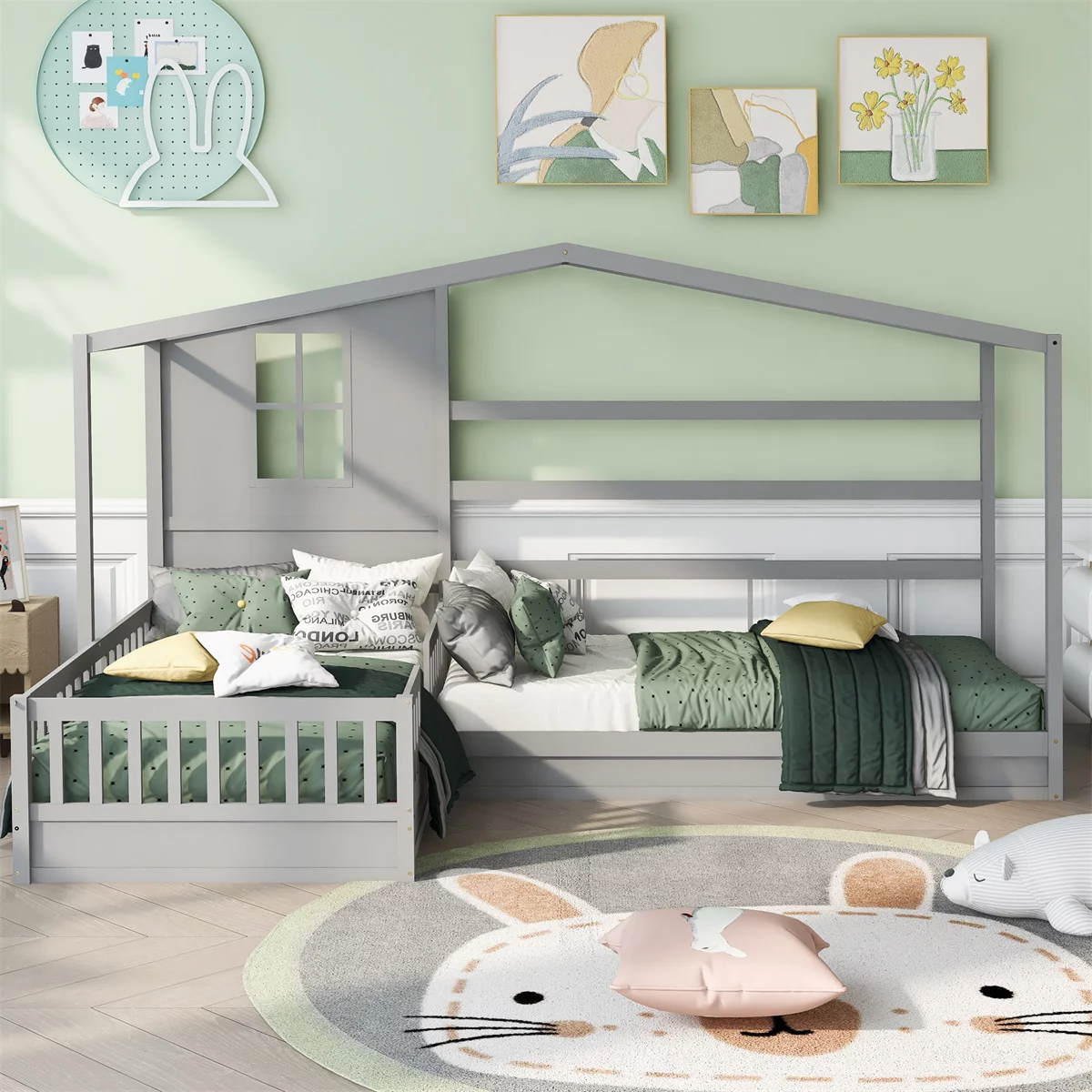
Kid’s Room Organizing
Solution of every parent’s nightmare
Organizing a child’s bedroom is indeed a challenging task for many parents. However, it is possible to create an organized environment that encourages independence in children. Research has shown that a well-organized space can significantly impact a child’s future habits and mindset.
As a certified Montessori teacher and experienced parent, I believe involving children in organizing is crucial. Collaborating with them to create a system tailored to their needs fosters independence and teaches valuable life skills.
When I create a system for a child, I work with the child personally from the age of 7, as I believe that it is significantly important to develop organizing skills and prepare an environment for your child.
All-in-One Home Organizing
This service includes organizing your entire apartment into a well-organized, harmonious living space. We create systems that enhance functionality and aesthetics, and we take care of every detail.

Through my work with children of various ages and my own parenting journey, I have learned that simply creating a system for a child is not as effective as creating one TOGETHER. Educating children on how to establish and maintain organization not only keeps their surroundings tidy but also helps to develop their cognitive abilities and time management skills.
By instilling these principles early on, children can develop a clear understanding of how to manage their tasks, space, and time effectively. This approach sets a strong foundation for their future success and well-being.
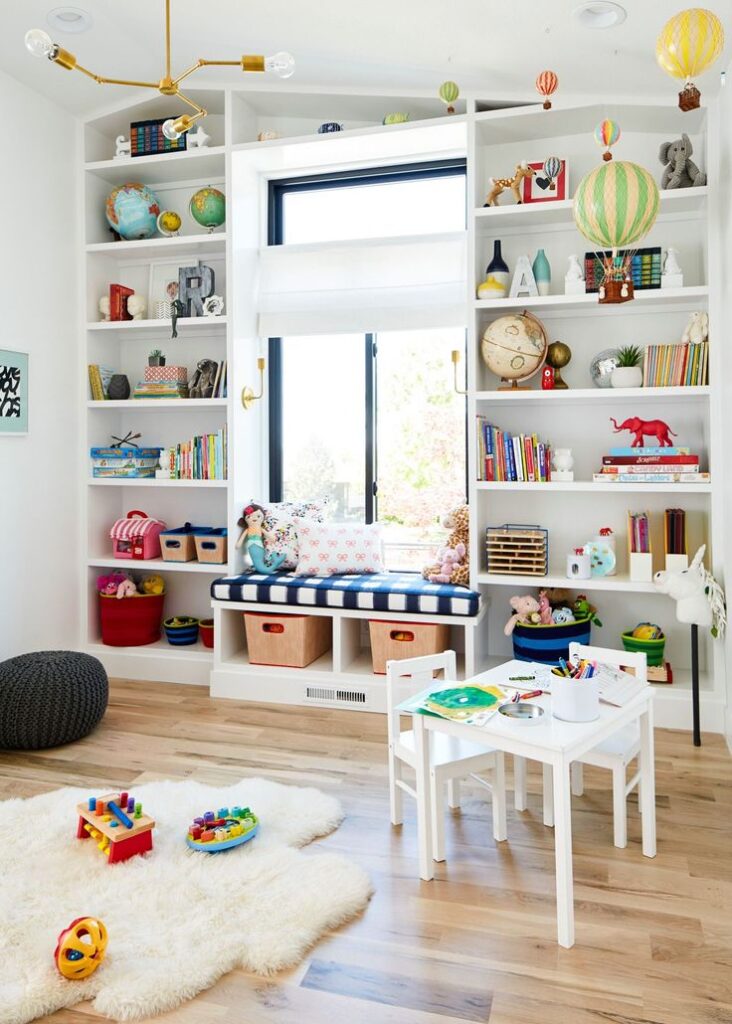
Creating a bedroom space for a child that can evolve with their changing tastes and needs is essential. It should be a place where they can express themselves, engage in various activities, and find comfort. Finding a balance between fun and functionality is key to designing a room that can adapt to your child’s growth and interests.
By incorporating elements that cater to different aspects of your child’s life—such as areas for play, relaxation, learning, and sleep—you can create a versatile and long-lasting room design. This thoughtful approach not only benefits your child by providing a space that meets their evolving needs but also ensures that the room remains relevant and functional over time.
Designing a space that accommodates various activities and moods can help your child feel more connected to their environment and foster a sense of ownership and creativity. Additionally, a well-thought-out design can save you from frequent and costly redesigns as your child grows.
Ultimately, by creating a bedroom that grows with your child and serves as a multifunctional and inviting space, you can provide them with a nurturing environment that supports their development and well-being.
There are a few significant features you have to keep in mind when you organize a room for a child:
List of solutions:
1. Zoning
How do I zone a child’s room and plan the location of items, taking into account the age and temperament of the child?
You should understand the character of your child and emphasize the areas of their interest, such as art, crafts, reading, and sports. Creating a comfy reading corner for a child who loves to read is a great idea. Also, if your child is a school student, you have to provide him with a decent space for studying and take into account ergonomic rules and space-using efficiency.
There are just a few important points you have to think about.
Organizing a kid’s room is a complex of design, psychology, ergonomics and financial aspects.
Proper zoning helps with substantially reducing the time taken for cleaning and completing chores.
We do detailed assessments of the child’s habits, character, family lifestyle and parents’ expectations as it helps to create a functional, educational and psychologically secure space for the child, where he can develop his inner potential fully.
Your ExpertHome Organizers
Let’s simply take your home from cluttered to cozy and get it sorted—your perfect, personalized system is just around the corner!
Closet Organizing | Bedroom Organizing | Kitchen Organizing | Office Organizing | ADHD | Hoarding | Challenging life situations

2. Comfortable clothing storage
Storage systems for clothing for kids are as important as wardrobe organization for adults. Children learn their decision-making skills from a very early age by choosing items from their wardrobes.
- How do I make clothes storage easy, taking into account the child’s age and height?
- What is the secret formula to finding the optimal amount of clothing?
- How do I change the drawers’ location to increase a closet’s spaciousness?
All there questions teach a child independence and cleanliness, as keeping a closet like this tidy is easy.
When organizing a small kids’ closet, planning and strategizing effectively is essential. Here are some key ideas to consider:
- Purge and Inventory:
Start by decluttering the closet. Remove outgrown clothes and unused toys to make space for current-use items. - Access and Organization:
Think about how your child can easily access their belongings. Keep frequently used items at a reachable height for them. - Modular Organization System:
Invest in a modular organization system that offers flexibility. This system should accommodate hanging and folded clothes, shoes, hats, accessories, and toys. - Future-Proof Design:
Plan for the future as your child grows. Consider adjustable features like removable low rods to make space for longer hanging clothes in the future. - Utilize High Shelves:
High shelves can initially be used for off-season storage and transition into everyday storage as your child grows taller.
By incorporating these ideas and tailoring the closet design to fit your child’s current needs while considering their future requirements, you can create an efficient and organized space for them to easily access and manage their belongings.
To maintain a clutter-free and hassle-free kids’ closet, consider the following organization tips:
- Use Organizers:
Utilize organizers to keep commonly used items easily accessible and to facilitate quick and tidy storage. This helps in maintaining order and reducing clutter. - Open Shelves for Quick Access: Incorporate open shelves in the closet to line up shoes and hats for grab-and-go access. This setup makes it easy for children to find and put away these items independently.
- Oversized Baskets for Personal Items:
Utilize oversized baskets to store personal items like underwear and socks. These baskets keep these items accessible while also keeping them out of sight, maintaining a neat appearance in the closet.
By implementing these strategies, you can create a well-organized and functional kids’ closet that promotes easy access to commonly used items while keeping clutter at bay.
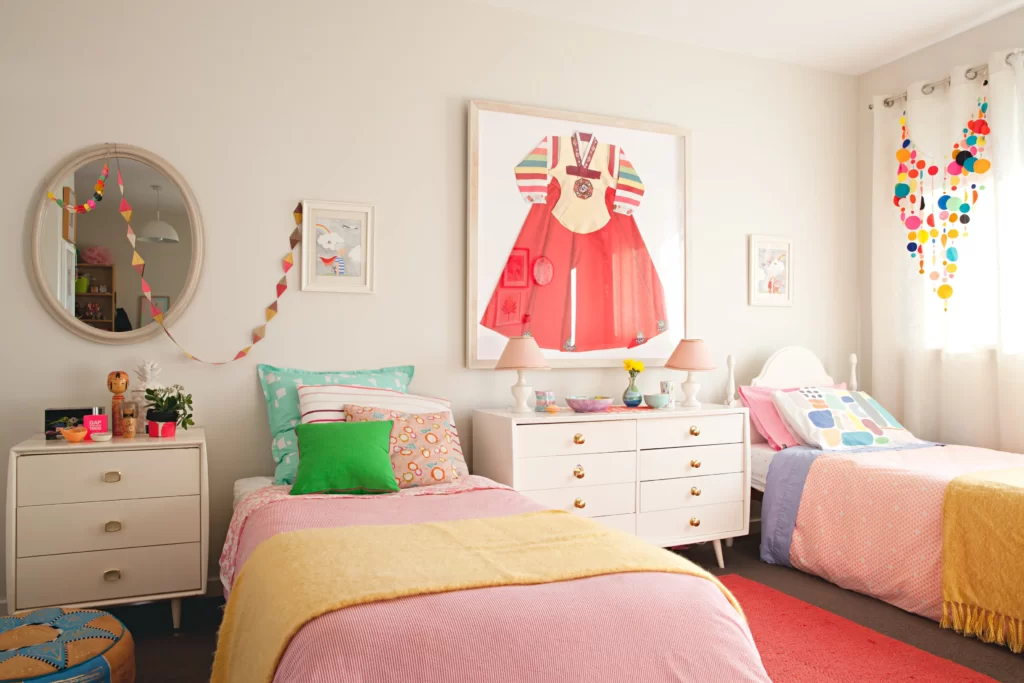
3. Toys Storage
How do I organize the storage of toys? How do I determine the optimal quantity, find the best storage container, and create a simple system my child can navigate?
Integrating adequate storage solutions for toys and maintaining a clear, clutter-free sleep space can help children focus on their current tasks and activities.
By having designated storage areas for toys, children can learn the importance of organization and tidiness while making it easier to locate and access their belongings. This promotes a sense of responsibility and independence in managing their possessions.
A clear and calming sleep area can help children unwind and relax, promoting better sleep quality and overall well-being. A clutter-free environment can reduce distractions and create a peaceful atmosphere conducive to restful sleep.
By separating play areas from sleep spaces and ensuring that each area serves its specific function effectively, children can better focus on the task, whether it’s playtime, learning, or getting a good night’s sleep. This organization and separation of spaces can help children develop routines and habits that support their overall productivity and well-being.
Effective toy storage solutions are crucial for a successful and organized children’s room design. Dual-purpose furniture pieces, such as trunks that can also serve as seating, are practical and versatile additions to the space.
Here are some reasons why dual-purpose furniture like trunks can be beneficial:
- Maximizing Space:
Dual-purpose furniture helps optimize space utilization in a child’s room, especially in smaller areas where every inch counts. Trunks that double up as seating provide storage without occupying extra floor space. - Functionality:
Furniture that serves multiple functions adds value by offering both storage and seating solutions. Trunks can neatly store toys, books, or other items, while also providing a cozy spot for reading, playing, or relaxing. - Versatility:
Pieces like trunks can adapt to different needs and preferences over time. As children grow and their interests evolve, these versatile furniture items can continue to be useful in various capacities. - Aesthetics:
Stylish trunks can enhance the visual appeal of the room while maintaining a neat and organized look. They can blend seamlessly with different decor styles and add a touch of charm to the space.
By incorporating dual-purpose furniture like trunks in a child’s room, parents can effectively manage toy clutter, create functional seating options, and contribute to a well-organized and inviting environment that caters to both storage needs and practical use.
When the storage of toys is organized properly, children are more interested in play, as they can easily find the toys they want, allowing for the evening clean-up to last as little as a few minutes.
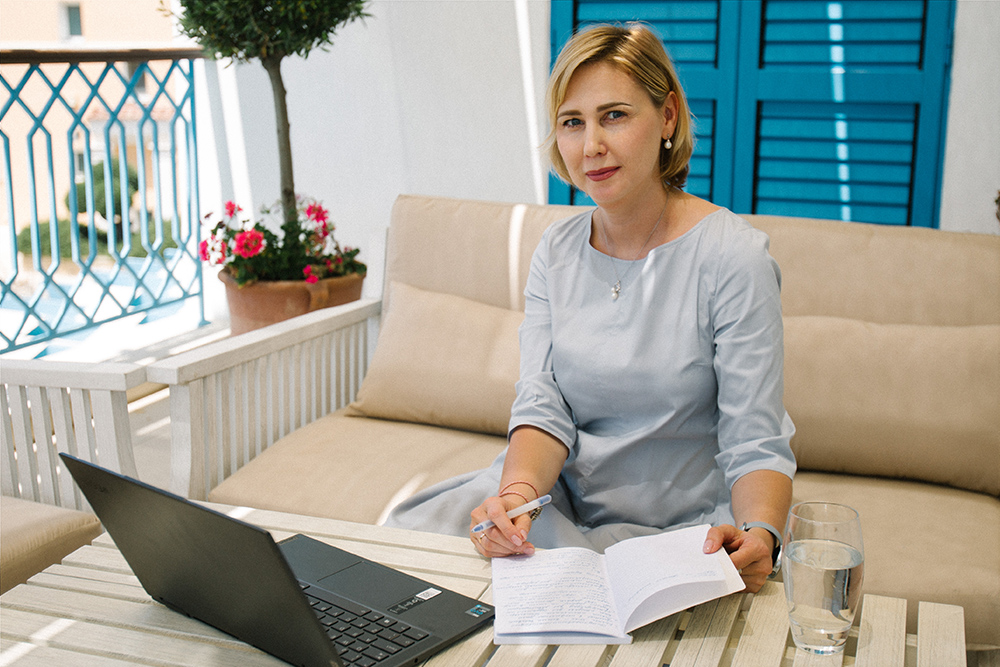
How we can help:
Our professional organizers are not only highly skilled but also compassionate and non-judgmental. We understand that de-cluttering and organizing can be overwhelming, and we’re here to support you every step of the way. Our goal is to empower you with the skills and systems needed to maintain order long after our services are complete.
And start your simply sorted life right now!
4. Effective work environment
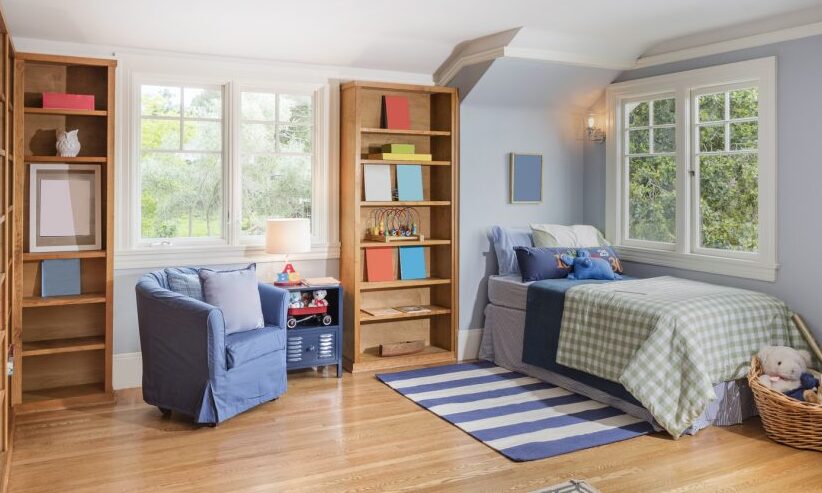
How do I create an effective work environment by correctly placing items?
You’ll find out how to find a proper workplace, and how to pick the best table and chair, to allow the best posture for your child.
When their work environment is well organized, children are less likely to be distracted and complete assignments faster. As well as this, there is less likely to be a mess in their workspace.
Investing in a dedicated workspace for children of all ages is a valuable addition to their room. Here are some suggestions for creating functional work areas tailored to different age groups:
- Toddlers and Preschoolers:
- Low Table and Tiny Chairs: Set up a small table and chairs at a comfortable height for toddlers to engage in activities like reading, drawing, or playing with puzzles.
- Storage Bins: Include storage bins or shelves within reach to keep toys, books, and art supplies organized and easily accessible.
- Interactive Wall: Consider adding an interactive wall with features like chalkboard paint or a magnetic surface for creative expression and learning.
- Elementary and Middle School Children:
- Desk Space: Provide a proper desk with a chair for older children to study, complete homework assignments, and engage in creative projects.
- Task Lighting: Ensure adequate lighting for the workspace to reduce eye strain and improve concentration.
- Organizational Tools: Incorporate desk organizers, shelves, and a bulletin board to help keep school supplies, books, and notes in order.
- High School Students and Teenagers:
- Study Area: Create a designated study area with a larger desk, ergonomic chair, and storage solutions for textbooks, laptops, and study materials.
- Personalization: Allow for personalization of the workspace with inspirational quotes, artwork, or photos to make the area feel inviting and conducive to productivity.
- Tech-Friendly Setup: Consider including charging stations, cable management solutions, and a comfortable seating area for longer study sessions.
By providing children of all ages with a dedicated workspace that suits their developmental needs, parents can encourage good study habits, foster creativity, and support learning in a comfortable and organized environment within the home.
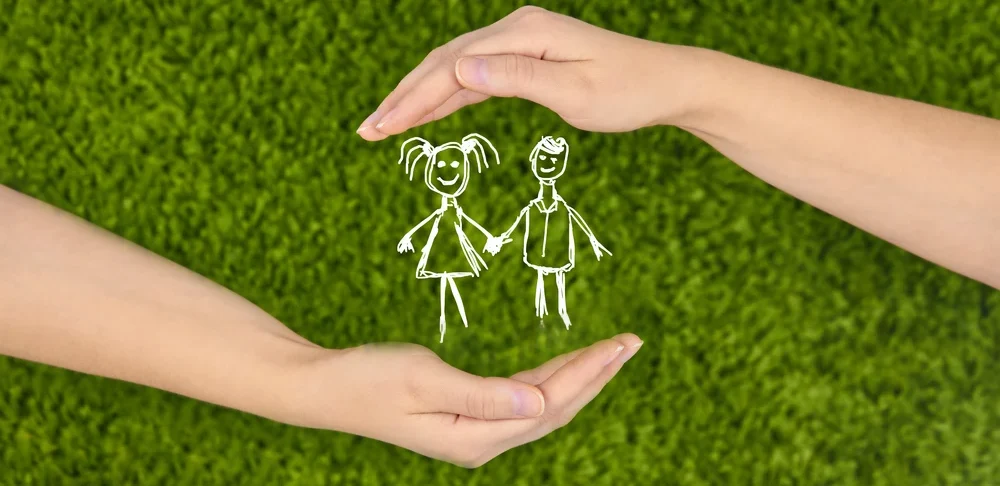
5. Child Safety
We will pay attention to the safety of children within their room (windows, furniture, outlets, sleep area etc), to avoid possible injury.
There are a few main aspects you have to consider when you create a space for your child:
- Furniture stability. Ensure furniture like dressers, bookshelves, and cabinets are securely anchored to the wall to prevent tipping over.
- Soft Flooring: Use soft rugs or carpeting to cushion falls and reduce the risk of injuries.
- Window Safety: Install window guards or stops to prevent falls. Keep blind cords out of reach or use cordless window coverings.
- Electrical Outlets: Cover all electrical outlets with safety plugs or install tamper-resistant outlets.
- Toy Storage: Organize toys in bins or containers with no sharp edges to prevent tripping hazards.
- Sharp Objects: Keep sharp objects like scissors, knives, and other tools out of reach in locked cabinets.
- Secure Accessories: Anchor heavy or decorative items securely to prevent them from falling.
- Bed Safety: Use bed rails for young children to prevent falls. Ensure bedding is age-appropriate (no blankets or pillows for infants).
- Non-Toxic Materials: Choose non-toxic paint, furniture, and decorations to minimize exposure to harmful chemicals.
These are general guidelines, and specific safety measures may vary based on the child’s age and circumstances. Regularly inspect the room for potential hazards and make adjustments as needed to ensure a safe environment for your child.
When we organize a room for your child, we always take into account that your child is growing, and the system in their room must be flexible enough to adjust according to their age and the skills they obtain. But it is also very important to provide freedom to your child to help them grow and learn.
6. Effective methods for kids to stay organized
In addition, we will implement effective methods of teaching your children, no matter their age, to stay organized without arguments or fighting. Rules regarding organization help to create a positive relationship with your child and teach them responsibility and care towards their living environment.
Instilling a sense of organization in children can indeed be a rewarding task. By integrating fun and creativity into their daily routines, you can make the process enjoyable and effective. Here are some strategies to help your child develop organizational skills effortlessly:
- Make Homework Time Cozy: Create a designated homework area that is inviting and well-organized. Personalize it with your child’s favourite colours, decorations, and supplies. Consider adding comfortable seating, good lighting, and storage for school essentials.
- Celebrate Special Days: Designate a few days each month to celebrate the organization. Use these days to engage in fun activities like decluttering a specific area together, rearranging shelves, or organizing a closet. Reward your child’s efforts with praise, a small treat, or a fun outing.
- Create Organizational Games: Turn the organization into a game to make it more engaging. Use timers for quick cleanup challenges, have races to see who can tidy up their toys the fastest, or create a scavenger hunt to find misplaced items.
- Use Visual Aids: Implement visual aids such as checklists, colour-coded labels, or pictorial schedules to help your child understand and follow through with daily tasks and routines. Visual cues can make organizing more manageable and fun.
- Lead by Example: Children often learn best by observing adults. Demonstrate good organizational habits in your routines and involve your child in household organization tasks. Show them how to sort items, maintain a tidy space, and prioritize tasks effectively.
By infusing daily routines with fun, celebrating achievements, and providing a supportive environment, you can help your child develop strong organizational skills with ease. Remember to be patient and encouraging as they learn and grow in their organizational abilities.

Let us release your pain!
Contact us, explain your situation and we will declutter your kid’s room!
Get your free consultation now!
